
June 27 - July 25, 2010
Curated by Christof Migone
OFF-SITE LOCATION
141 Lakeshore Rd E (at Lakeshore Rd. E and Hurontario St.)
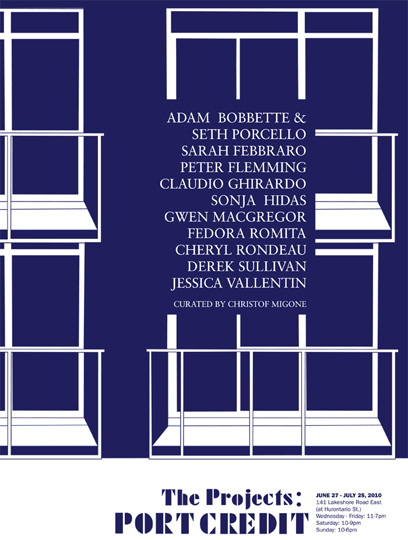
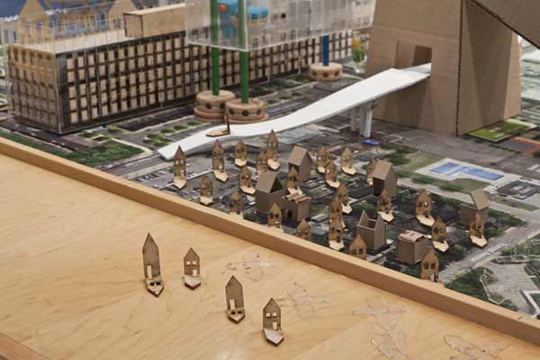
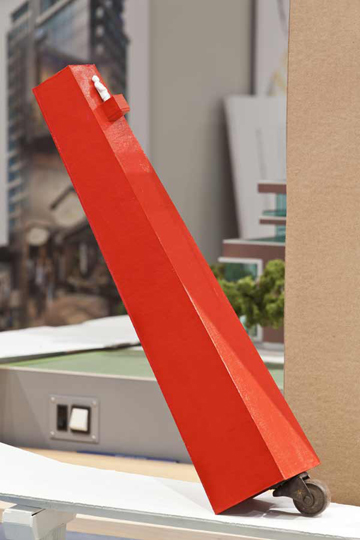
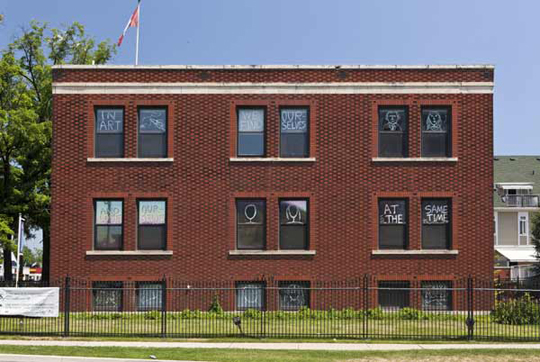
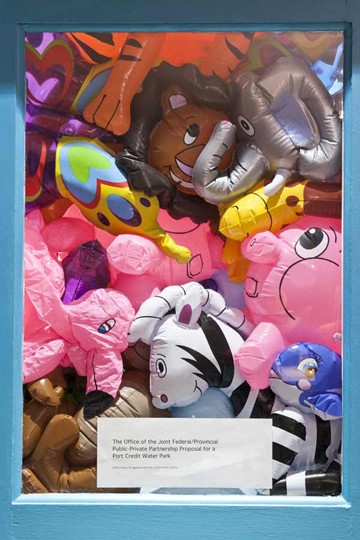
Sunday June 27th, 12:30 to 1:30pm: Mapping Port Credit: A Bike Tour
Join Cheryl Rondeau for a group bike tour starting at the Lighthouse (corner of Front St. and Lakeshore Rd.) at 12:30pm and ending at the opening reception. For more info on Cheryl Rondeau's bike project 43˚33’ 27”N 79˚35’24”W: Port Credit please visit: www.cherylrondeaucycles.com
This is a rain or shine event!
Sunday July 11th, 11:30am to 5pm: ARTBus Tour
Tour departs 11:30am from the OCAD (100 McCaul St. Toronto) Art Gallery of Mississauga, Blackwood Gallery at Port Credit and Oakville Galleries. Lunch provided by Whole Foods Market. Cost: $10.
Friday July 16th, 6 to 7pm: Curator's Tour
Join us for a guided tour of the exhibition with the curator, Christof Migone.
Sunday July 18th, 12noon to 5pm: FREE Contemporary Art Bus Tour
Starting with a tour of the Koffler Gallery offsite exhibition located at Mon Ton Window Gallery (402 College Street) at 12noon, the bus will depart at 12:30pm for the Blackwood Gallery at Port Credit, the Doris McCarthy Gallery (UTSC) and the University of Toronto Art Centre, and return to College/Bathurst by 5pm.
Last summer, the Blackwood Gallery presented its first ever off-site exhibition. Titled The Projects: Port Credit, it presented creative stagings and reflections on the myriad futures to be imagined in Port Credit, Mississauga. The second edition of The Projects: Port Credit builds on the first by moving from an empty architect's office to a condo showroom. From an empty shell where plans are no longer conceived to an overdetermined space where plans are foregone conclusions. The ten invited artists participating in The Projects insinuate themselves in the showroom and in the surroundings of the building in ways ranging from anodyne to grating. But to intertwine remains the shared modus operandi. In other words, they favor understatement, they poke cunningly rather than crudely. The ten projects presented do not point in a single direction, they each propose idiosyncratic paths and develop unique slants. Some of the areas under scrutiny are commuter trains, bicycle routes, commemorative displays, architectural models, resonant frequencies, water parks, public sculpture, vanishing chairs, descriptive language, and graffiti on glass. Throughout, there is a clear intent and conviction that contemporary art in Port Credit has a place in the daily fabric of the community. Imagine, if you will, a cultural boom to accompany the construction boom. Imagine this formidable pair, yes, but let's also act on its translation to realization. In this context, The Projects might function like a timely prod, an inciting nudge, a flash forward in that direction.
Christof Migone, Director/Curator, Blackwood Gallery
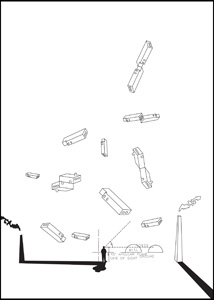
What size is the present, here, right here? We are lived by our models. Have you ever felt like you are living in a very big architectural model, like you are the model of the little model people that occupied your exact place now but at a smaller scale? The old starch factory smokestack is being carried off in an ambulance. Things are out of place, or are we in their place? The old starch factory smokestack is imploding right over there amidst celebration. The future is as big as the building across the street and as small as the bathroom, here, right here, in the showroom. The past too is getting bigger and smaller at the same time. And it appears to be in the wrong place.
Adam Bobbette is a researcher and designer based in Toronto whose work addresses the politics of the contemporary urban landscape. He is especially concerned with histories of experimental and minoritarian architectural practices, participatory design, and the ways in which the tools of architectural and landscape design can contribute to community organizing and the autonomous production of culture.
Seth Porcello is a researcher, designer and audiophile based in Charlottesville, Va.

For The Projects, I have created a flower memorial/‘garden’ on the fence that surrounds the outside of the exhibition site. Saturating the fence with wreaths and bouquets of mostly artificial flowers transforms the public space and acts as a symbol to consider the notion of loss and growth in an area that is undergoing rapid development. Beautiful and gaudy, No Place Good Place intends to draw people in and act as a possible site of reflection for the Port Credit community.
Sarah Febbraro’s art practice incorporates performance, video, installation, photography and drawing. She received her MFA from The School of the Art Institute of Chicago in 2008 and has exhibited her work in festivals and galleries throughout the United States and Canada. She often invites people to collaborate or participate in her projects which have included neighbhourhood talk shows, public dance classes and YouTube collaborations. She currently lives in Toronto and works as the Community Arts Programmer at Oakville Galleries. http://sarahfebbraro.com/splash.html

All materials have resonant frequencies at which they most naturally vibrate. Vibrations and Waves is a series of site-specific experiments in oscillatory phenomena. The experiments are arranged in such a way to make a connection between a small maintenance closet and the main display area. In these adjoining spaces, vibrating electro-magnetic fields are applied to diverse found materials and building elements in order to sonically activate them. Ductwork, water pipes and panes of glass are wired up to resonate. The sound created is mechanically produced and amplified, not pre-recorded or electrically amplified. The vibrations are emitted by small electro-magnetic coils each controlled by a solar powered circuit. There are multiple coils throughout the space. Each operates independently, the frequency and character of the sound produced by them is determined by the amount of light feeding the solar panels. The overall effect is of a soft choir, richly resonant in changing dissonances and harmonics. A complex drone that never repeats itself is created, which hopefully opens up a small space for contemplation into which the audience can become temporarily absorbed.
Peter Flemming is an artist who makes machines. He sees the machines he makes as the electro-mechanical equivalents of short stories. Instead of words, sentences and paragraphs, he uses bolts, batteries, metal and custom electronics. These machinic texts create tension by mixing natural and technological systems. His work has been featured across North America and Europe. Flemming currently resides in Montreal, where he teaches electronics for artists at Concordia University. He has held workshops in electronics and programming at artist-run centers around the world. http://www.peterflemming.ca/

As an artist living in Port Credit for the past 4 years, I am curious to know how local residents approach art: What do they consider to be art? What is their experience with it? Are they open to various artistic processes? Do they consider art part of their cultural environment? My intervention will take place on the windows of the FRAM building and will therefore be visible by the passersby driving or walking along Lakeshore and Hurontario. Consider will utilize graffiti and quotes by Thomas Merton, a Trappist Monk who was devoted to poetry and social activism, and Joseph Beuys, a 20th Century artist who was deeply committed to humanism and social philosophy. I want to engage the public with ideas and thoughts about the possibilities for art within their everyday environment.
Wanting to draw comics when he was young, Claudio Ghirardo attended the Joe Kubert School of Cartoon and Graphic Art, Inc. in Dover, New Jersey. A trip to the Museum of Modern Art in New York during his first year of school completely changed his perspective of art. Upon returning to Toronto, Ghirardo began working as a freelance illustrator while exhibiting his art on the side. While attending the 2007 Venice Biennale, Claudio saw the wall drawings of Dan Perjovschi and realized he wanted to use the same strategy for his drawings. Presently working full-time as an artist, Ghirardo divides his time between paintings and installation drawings.

The Region of Peel’s waste management guide catalogues large items such as furniture and appliances as a specialty collection. These items are acceptable for curbside collection under special allowances. In the context of Large Items they temporarily take up a spot on a parking lot to become public art on private property. The installation is used as the canvas for text-based interventions which meditate on domestic life and discuss the issue of public art within the cultural development of Mississauga.
Sonja Hidas graduated from Dawson College’s Illustration and Design program in Montreal, Quebec. Hidas’ work has received provincial recognition from Community Arts Ontario and, in 2009 was awarded Mississauga visual artist of the year. She has received grants from the Ontario Arts Council and The City of Mississauga. Her current work explores meditation and reflection where barriers separate and disappear regardless of differences in race, religion, sex or abilities. Presently, Hidas directs HotBox Joshua Creek, an outdoor educational program located at the Joshua Creek Heritage and Arts Centre in Oakville, Ontario. http://sonjahidas.com

To better utilize Lake Ontario as a Port Credit asset, a new office has been established to research the feasibility of transforming Port Credit into a water park. Suggestions for possible themes and enquiries welcome during office hours: Wednesday through Friday 11 - 7, Saturday 10 - 9, Sunday 10 - 6.
Gwen MacGregor is a Toronto artist working in installation and video. Her art reflects her close observation of time and how its passage shapes small dramas or uncannily familiar situations. In 2001 her work was presented in the Present Tense project series at the Art Gallery of Ontario. MacGregor's work has also been shown in many exhibitions across Canada and in Mexico City, London, Prague, Venice, Shanghai, Los Angeles, Paris, Madrid, Berlin and Sydney, Australia. In 2003 she was the recipient of the Friends of the Visual Arts, Toronto, Artist of the Year Award. In 2004 she participated in the Canada Council International Studio/Curatorial Program in New York. Last year she participated in an artists’ residency at CAMAC, France. Her work is in a number of collections including Artbank, the Art Gallery of Ontario and the Royal Bank Collection. MacGregor is represented by Jessica Bradley Art + Projects. Current projects include a solo exhibition at the Kitchener/Waterloo Gallery and inclusion in Manif d’Art 5 in Quebec City. She recently completed an undergraduate degree in Cultural Geography from the University of Toronto. http://www.jessicabradleyartprojects.com/artists/gwen_macGregor/show
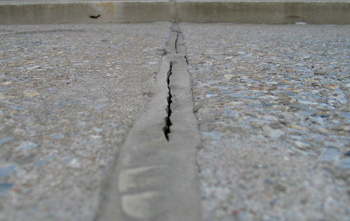
In the centre of the FRAM Building Group's presentation site sits an aerial view image that captures the company’s rejuvenated Port Credit properties. From such a distance an observer can perceive the spatial relationships among the buildings, trees, roads and sidewalks. They can visually determine and through language produce a description that can easily be communicated to a listener. Another feature of the presentation site are three video screens embedded in a wall, their primary function is to present and communicate an accurate description of the architectural concepts designed by the company. Romita repurposes them in order to screen a series of videos produced with the participation of members of the Port Credit community. During video recording sessions, participants are asked to describe an image of the properties built by FRAM in Port Credit that is digitally processed to highlight certain characteristics that render it largely unrecognizable. Though it still possesses traits fertile for description, it now bears an exaggerated or diminished resemblance to its original. At the time of the recording they do not know that the photograph they are describing is an image of the re-invigorated Port Credit. Each participant is asked to describe the image in as much detail as possible and to describe it for as long as possible. This piece is an exploration of the potential for and the limitations of description.
Fedora Romita is an interdisciplinary artist. Her practice includes performance, interactive drawing projects, video, installation and a dance/choreography collaboration. Her work concentrates on process and can be understood through its construction over time. She received her BFA from the Ontario College of Art and Design in Sculpture Installation. Her work has been included in festivals such as Nuit Blanche Toronto, and she participated in the Future of Idea Art residency at the Banff Centre. She has exhibited in solo shows at the Agnes Etherington Art Centre and Sleepwalker Projects as well as in group shows at Western Front, Xpace, YYZ Artists' Outlet, Spin Gallery, Gallery 1313 and Latitude 53. She was recently commissioned for a web-based group exhibition entitled In Site through Year Zero 1.
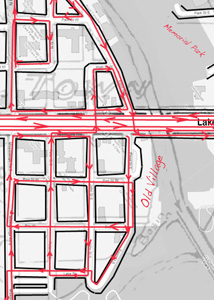
For The Projects: Port Credit, Cheryl Rondeau proposes a new local cartography through the creation of a meandering cycling route that retraces history and borders. The artist revisits these frontiers and boundaries in an effort to examine the transition from then to now and old to new. Rondeau remaps a configuration of the old Village, physically and kinetically linking it with the various communities and requisite components that eventually comprise Port Credit as it is now known. The project mines history, it embeds the former within a current geography and thereby emphasizes the process of ongoing change. A detailed map highlighting the artist's exploration, including statistical information and historical references, will be made available to visitors of the exhibition. In addition, the project includes a virtual element in the form of a blog where the artist chronicles her cycling explorations and tribulations: www.cherylrondeaucycles.com
Cheryl Rondeau is a visual artist who works with both still and moving imagery to transform moments of transition and quotidian into the monumental with the intent of exposing influences and mechanics that mediate representation and identity. Born in St. Catharines (Canada), Cheryl Rondeau studied art at York University, the Ontario College of Art & Design and has a Bachelor of Arts degree in Social/Cultural Anthropology from the University of Toronto. Her work has been included in exhibitions and festivals internationally including Festival international du film sur l’art (Montréal), Mediawave International Festival of Visual Arts (Gyor, Hungary), Scope Art Fair (New York City) and Museum of Modern Art (Bogota, Colombia).

A collection of chairs, functioning as a sitting area in the exhibition. Visitors are encourage to use them, to move and sit on them as they please. At the close of each day they are collected and placed together in an informal cluster, ready for the following day. The eight chairs were designed by Danish architect Arne Jacobsen in the 1950s, and subsequently this design (known as Model 3107) became one of the ubiquitous chairs of the post-war era. Official production by the Fritz Hansen company has produced well over 5 million of them, and this does not take into account the countless knock-offs in circulation. At two times in the chair's history Fritz Hansen has approached artists to design a palette for these chairs. Verner Panton introduced a psychedelic palette of bright solid colours in the late 1960s. In the 1980s the company had Poul Gernes contribute a palette, a strange collection of pastels. At the time, Gernes' work was often in the form of murals and colour schemes for interiors, and I was struck by the way his painting practice was able to vanish with the interior scheme of a building. The step of introducing his palette to a design chair with world-wide distribution ultimately generated a painting that was passively consumed throughout the world in the various interiors to which it was included. This passive or invisible painting is the basis for my project. I photographed Gernes' palette and then had paints mixed to match how his colours appear on a photographic negative. I posit my palette as a possible one for the Fritz Hansen company to use, extending the vanishing of Gernes' painting by further hiding it.
Employing formal and textual elements that frequently contradict and alter relationships with one another, Derek Sullivan draws upon overlapping histories of modernist design, abstraction and conceptual art to unsettle notions of meaning and authorship. Sullivan uses drawing and sculpture, in addition to producing various ephemeral conceptual projects, to explore his interest in reinterpreting familiar forms in order to open up new areas of inquiry. He has participated in numerous group exhibitions, including P2P at Casino Luxembourg (curated by Le Bureau), and Citizen, Denizen, Resident at Tatjana Pieters, Gent, Belgium. Recent solo exhibitions include Jessica Bradley Art + Projects; Southern Alberta Art Gallery, Lethbridge; Galerie Florence Loewy, Paris; and White Columns, New York. Derek Sullivan holds a BFA from York University and an MFA from the University of Guelph. http://www.dereksullivan.ca/
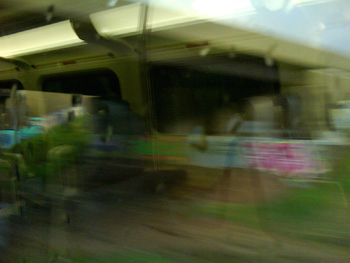
Genna Davis' project is to stage a series of events that would occur in/on/around the GO, with a particular focus on the trains and stations in the section of the line that runs between Union Station and Port Credit. The events are centered around notions of social and spatial activation. They are ephemeral, sometimes even undetectable performances that reside outside of the usual ‘performance’ cues provided by a gallery space. Because of this, the events are able to come across as ‘real’ experiences for those that happen to witness them. By orchestrating these shared experiences Davis hopes to create a new level of awareness and a questioning of social codes. Ranging from the subtle to the obscure, these events are always connected to everyday actions. Remnants, traces, fragments of these grassroots (non)performances are made tenously present in the exhibition space.
Jessica Vallentin was born in Cayuga, Ontario. She has recently completed a Bachelor of Arts in Art and Art History at the University of Toronto Mississauga, and a Diploma in Art and Art History from Sheridan Institute of Technology and Advanced Learning.
Generous supported by the Canada Council for the Arts, the Ontario Arts Council, FRAM Building Group, the Port Credit Community Foundation and the Ontario Trillium Foundation.




